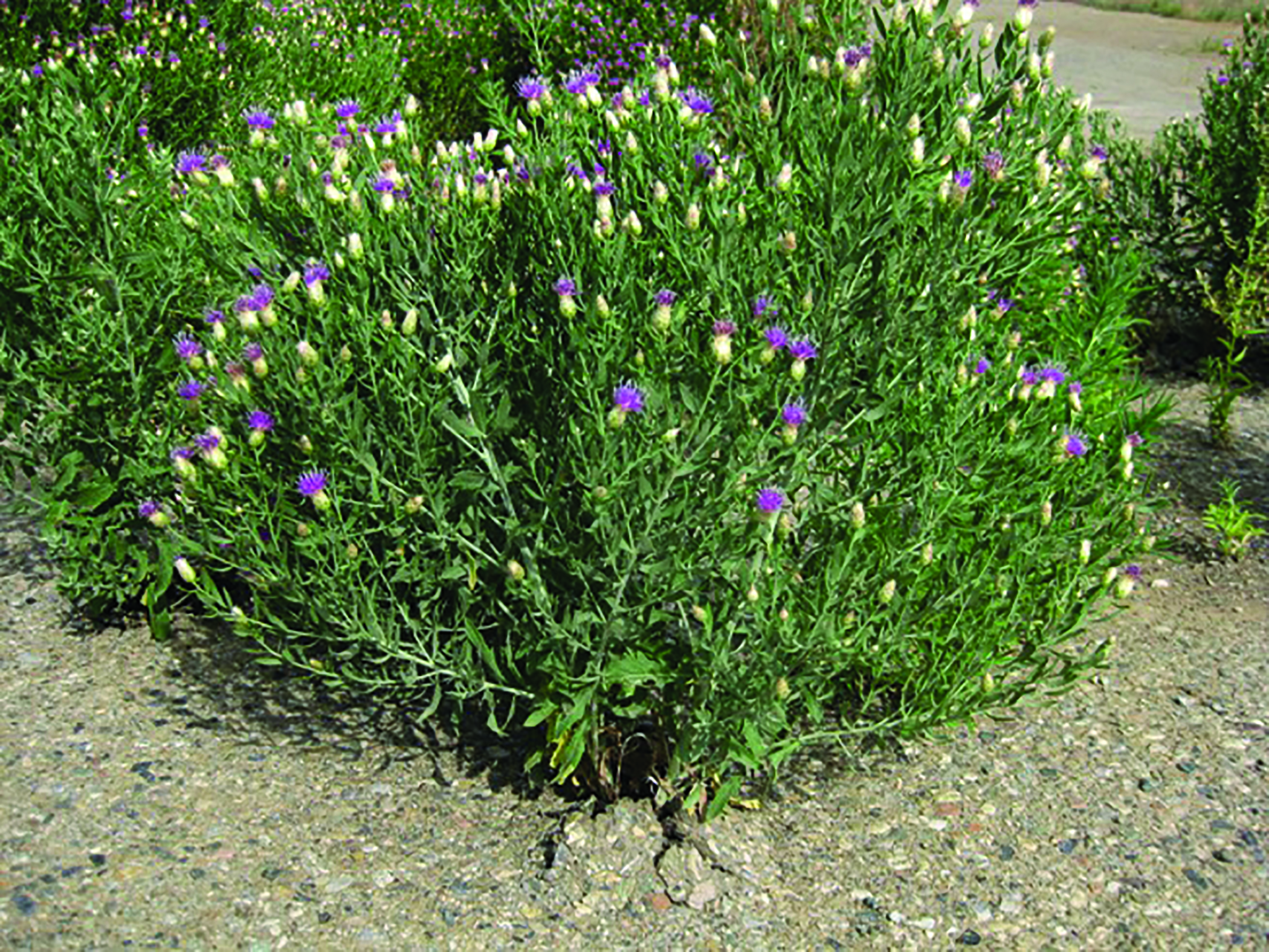Fall is an excellent time to control invasive weeds with herbicides. Fall applications can often provide equal or better weed control compared to spring or summer herbicide applications; however, success or failure will depend on: 1) the target weed species, 2) herbicide being applied, 3) growing conditions, and 4) soil residual properties of the herbicide.
What defines a fall application? This varies depending on your target weed species, location, elevation, aspect and other climatic conditions. Generally, fall applications can be made once herbaceous plants have expanded overwintering rosettes or perennial plants initiate new basal growth. A light frost may have occurred. It is a good idea to wait for moisture to stimulate growth of rosettes or regrowth of herbaceous perennial plants.

Why does fall application-timing work or not work? This is the time of year when these plants build up food reserves in their roots for next year’s growth. Herbicides applied at this time are also translocated to the roots, providing better control than when applied in the spring. Another advantage is many plants that might be injured by drift, but not noxious weeds, will be killed by a light frost. Deposition of the herbicide close to plant crowns and root system appears to be important. Research suggests that the distance between the source (above ground leaves) and sink (crown buds and root) is a major factor in movement of photosynthates and presumably systemic herbicides.
In addition, residual activity of the herbicide in soil is very important. Root and/or root bud herbicide absorption from soil is a significant factor in fall and early winter, especially for weeds like Canada thistle and Russian knapweed. Studies have shown that soil-residual herbicides are absorbed by Canada thistle and Russian knapweed roots and/or root buds even when no top growth is present.
The best defense against nonnative plant takeovers is constant surveillance of right-of-ways, streambanks, and internal roads and trails followed by effective control measures at the first appearance of new arrivals. Early detection and treatment will minimize efforts and costs that come with treating well-established plants or full-blown infestations. More effort is required for successful eradication of established infestations, but it still can be accomplished with proper treatments, although costs may be prohibitive. In severe cases, large-scale conversion of existing infestations is the only solution, involving eradication procedures that incorporate integrated management treatments and reestablishment of native plants.
On any of these weeds, you will never get complete control with a single application, but fall is a good time to start your noxious weed control program. This may allow you to cut out or spot treat individual plants with a herbicide next spring. Even if you do a good job of controlling noxious weeds between a fall and spring treatment, it is important to monitor the areas where they were a problem because the seed may remain viable in the soil for several years.
For more information on noxious weeds in Nevada, you can visit the Nevada Department of Agriculture’s website at: http://agri.nv.gov/Plant/Noxious_Weeds/Noxious_Weeds_Home/